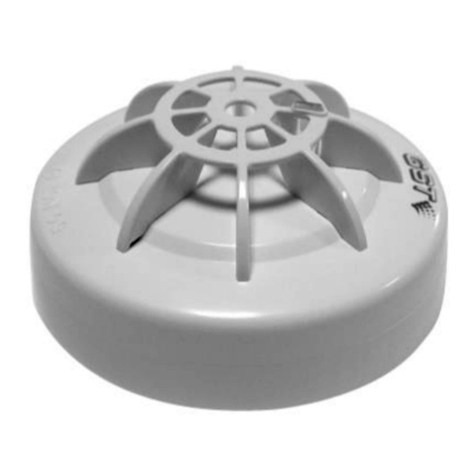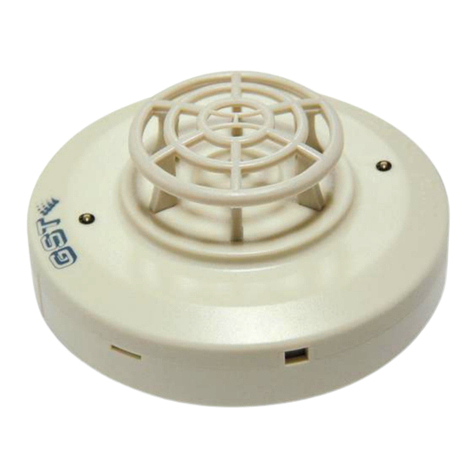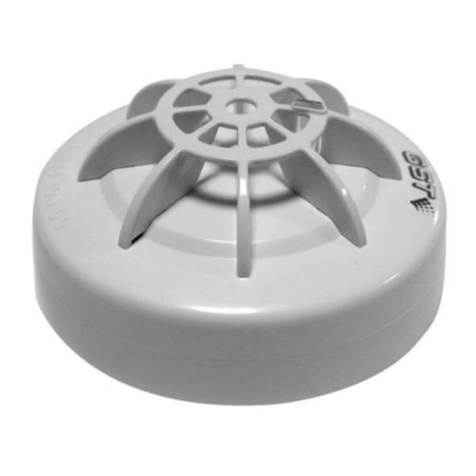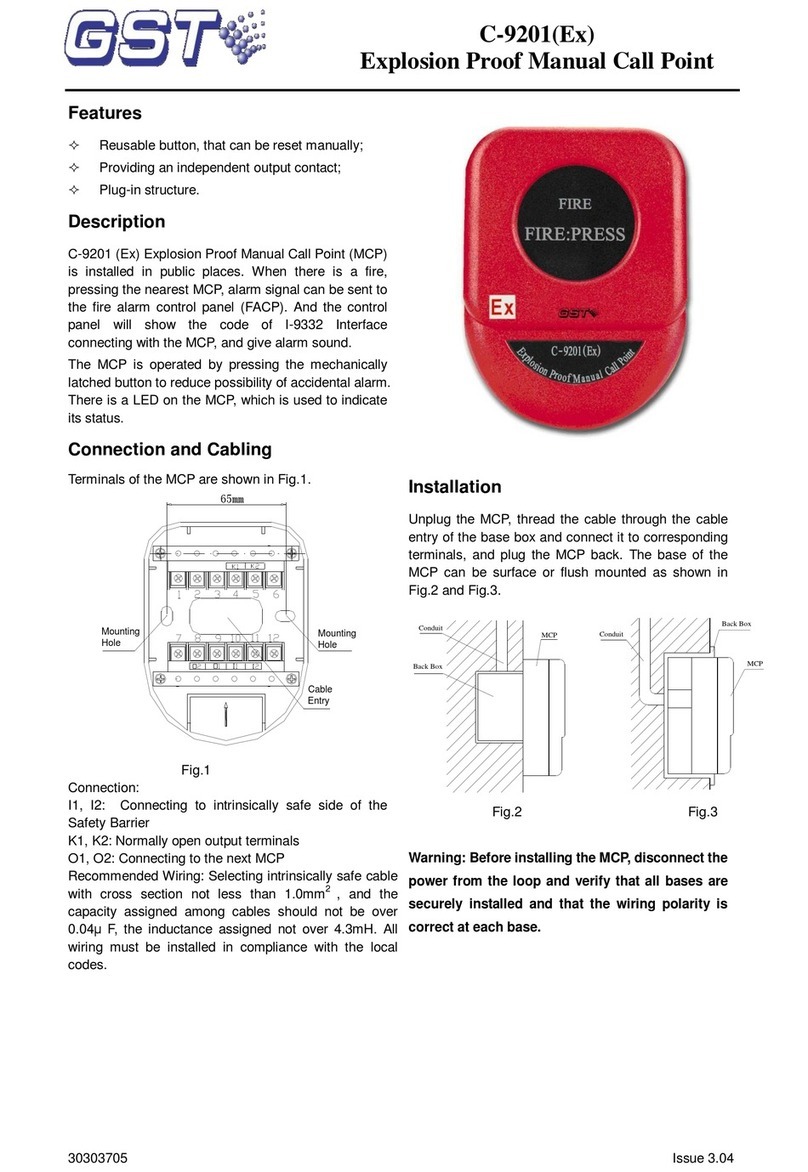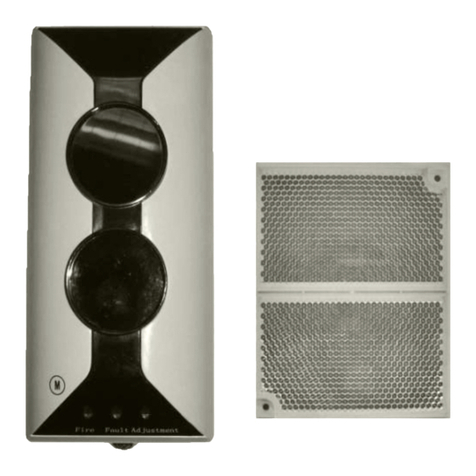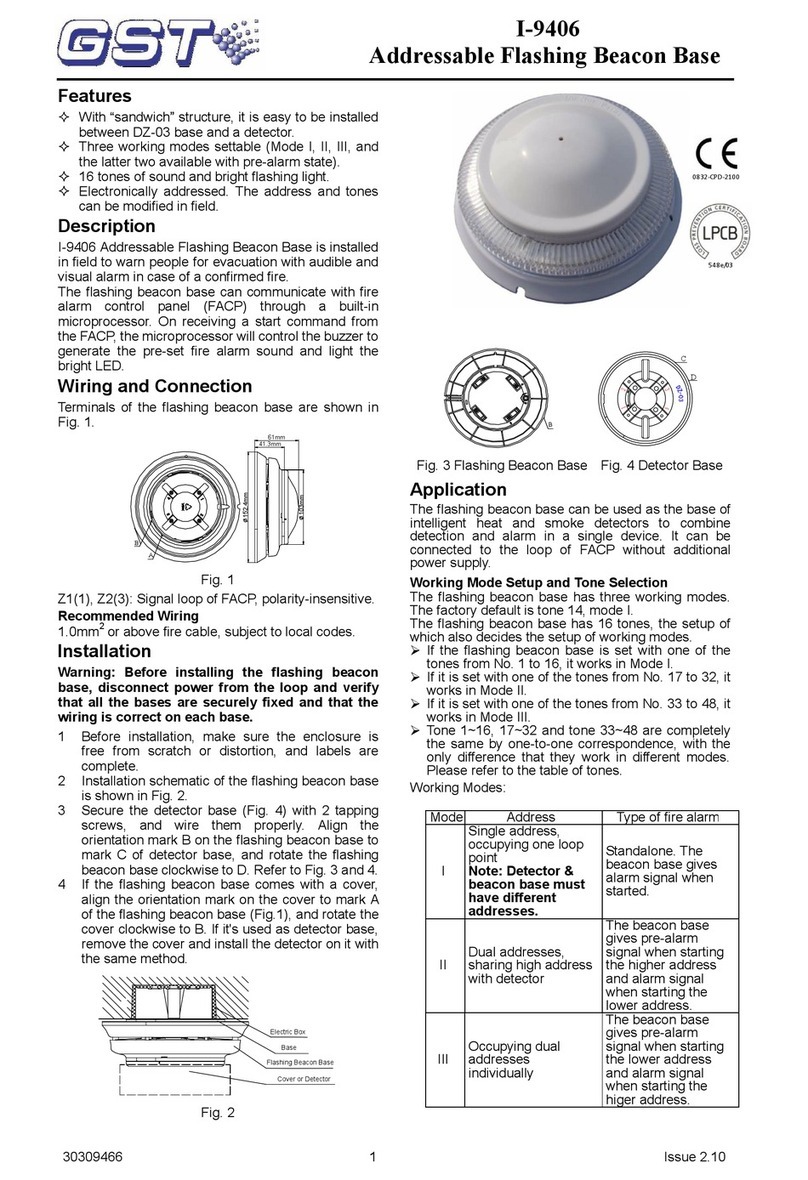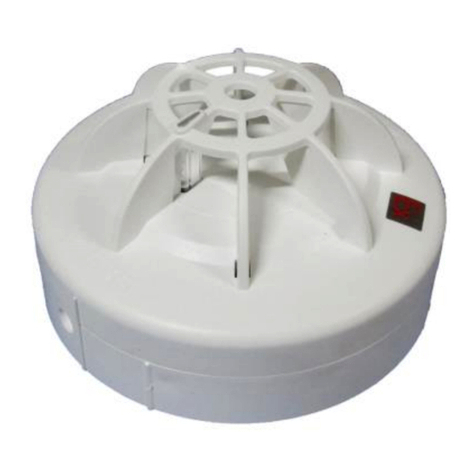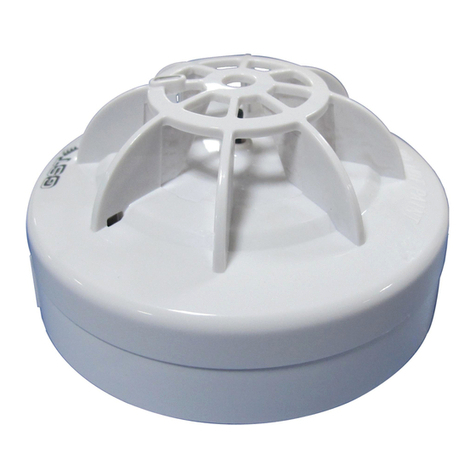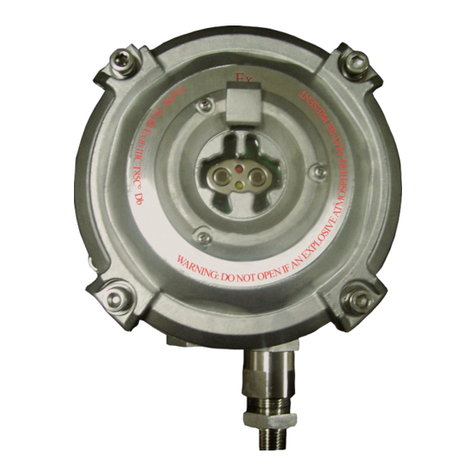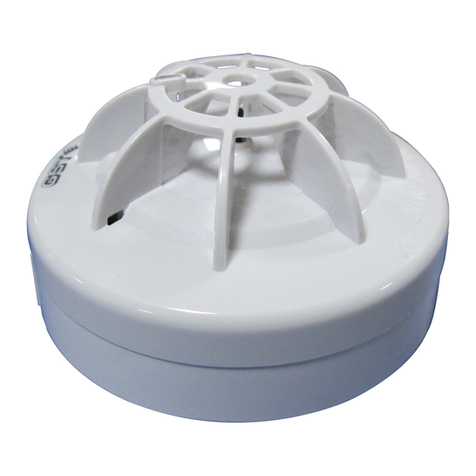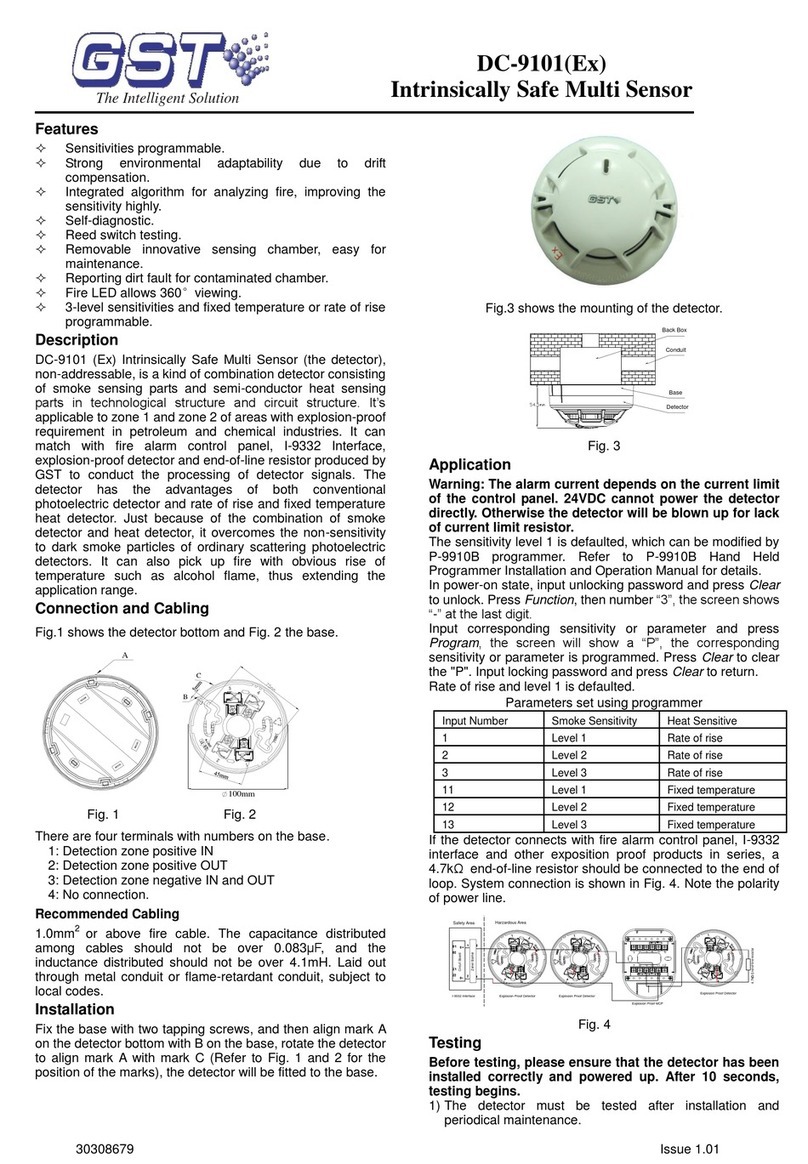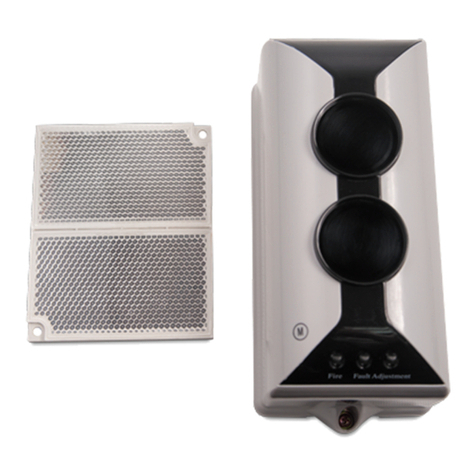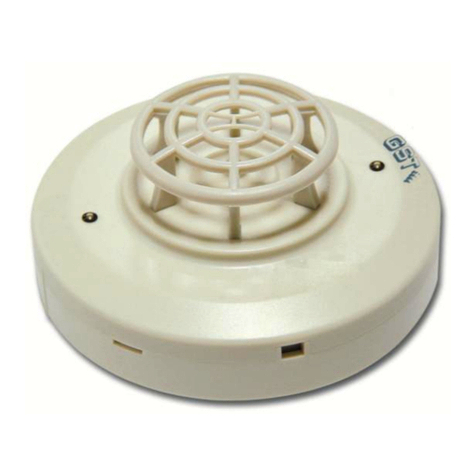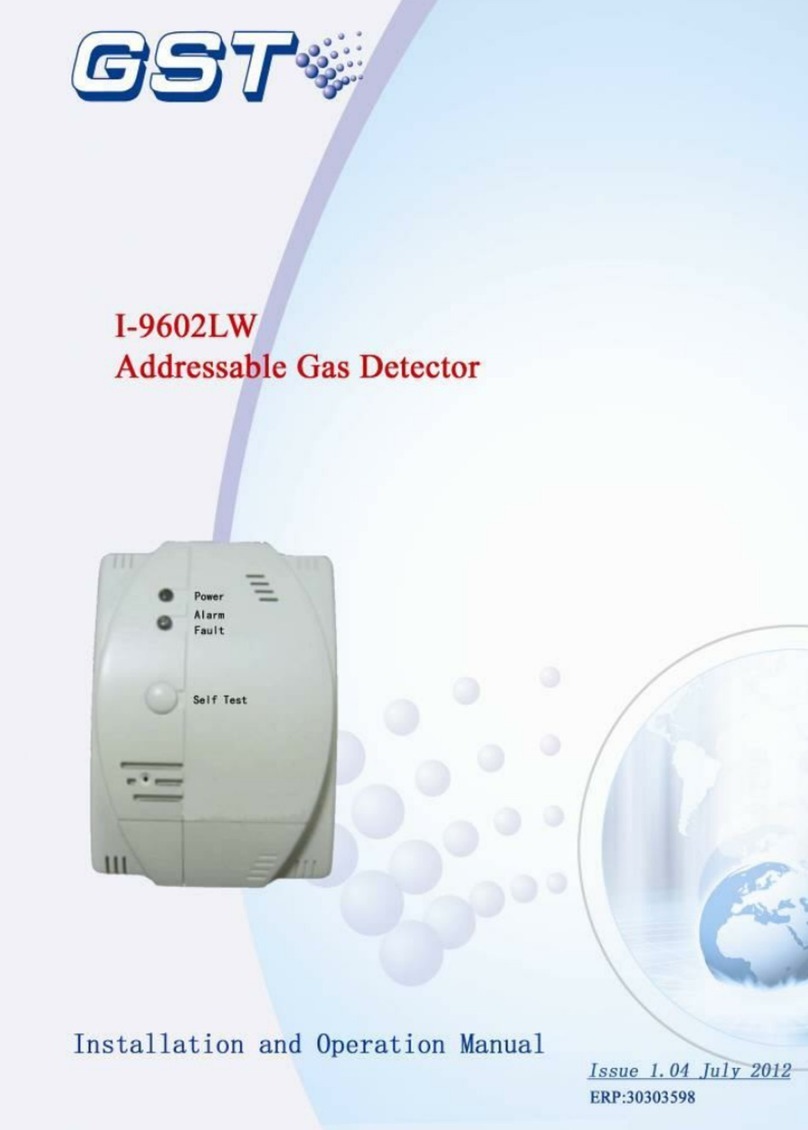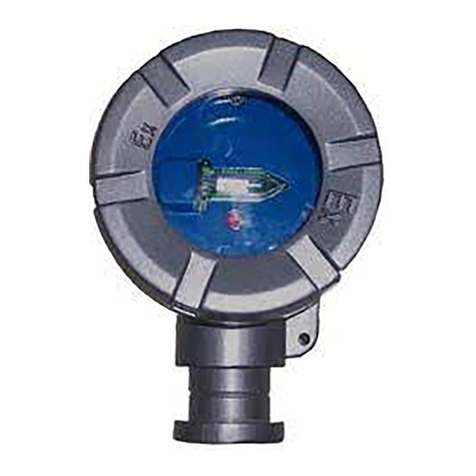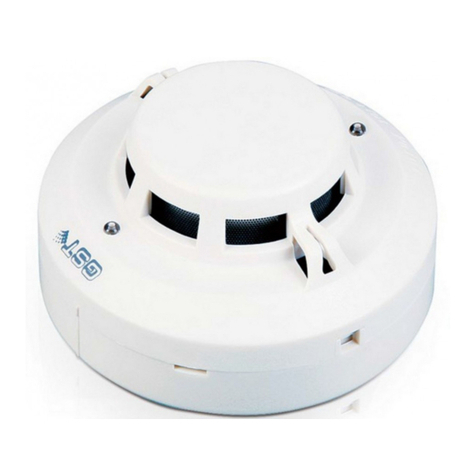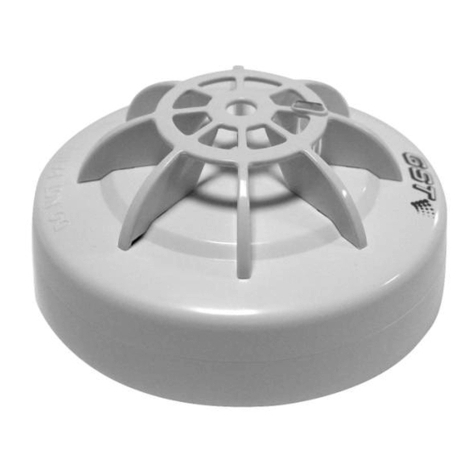DC-9105E Conventional Reflective Beam Detector
Installation and Operation Manual
1
1. Overview
DC-9105E Conventional Reflective Beam Detector (hereinafter
referred to as the detector) is a non-addressable smoke detector with
infrared optical beam. The reflective detector features of fire alarm and
fault contacts.
Combining a transmitter and a receiver, the detector connects only
one reflector on the opposite wirelessly. In this way, it is simple for
on-site wiring. One reflector or four reflectors are used based on
different mounting distance from a detector to a reflector.
The detector has an integral visible indicator and 2 bits digital tube.
It is easy to install and align the reflector as the visible indicator directs
the emitting infrared light. Alongside, it is convenient for commissioning
with 2 bits digital tube displaying received light intensity.
The detector is suitable for various applications including large
storage zones, shopping malls, fitness centers, gyms, exhibition halls,
hotel lobbies and areas with complex ceilings.
2. Features
1) Providing wide operating voltage and protection area.
2) Combining a transmitter and a receiver, one end connects wires
simply.
3) Judging fire alarms and faults intelligent with a built-in MCU.
4) Commissioning in field becomes easier than before with the help of
the visible indicator and 2 bits digital tube.
5) Monitoring faults inside the detector due to self-diagnosis ability.
6) Providing compensation for such sensor signal changes caused by
the build-up of dirt, position offset or a component aging.
7) Four sensitivities are available in field.
8) Standard: EN 54-12: 2015






